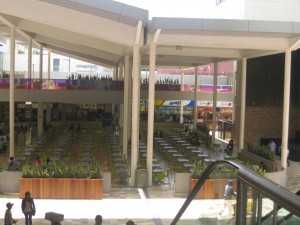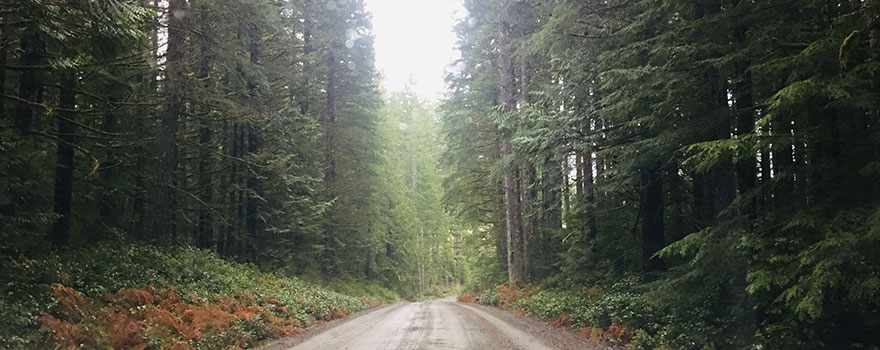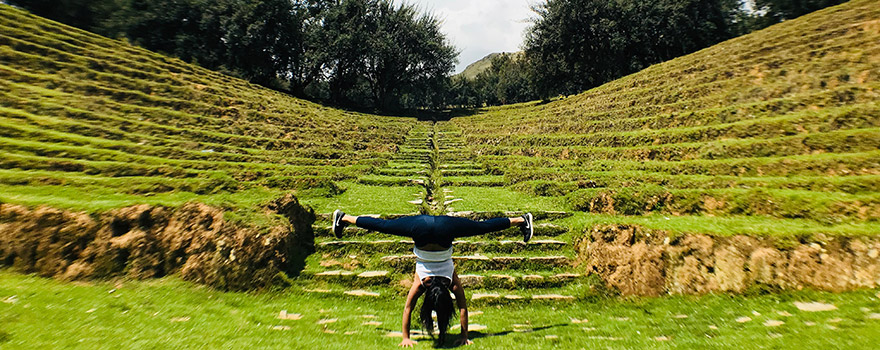“Only by going alone in silence, without baggage, can one truly get into the heart of the wilderness. All other travel is mere dust and hotels and baggage and chatter.” – John Muir



Tag: travel
This past year has been a journey of connection for me – just as every cell in the body is separate and simultaneously part of a whole, so too are we as human beings individuals that are intimately interconnected. It’s what I come back to when I feel lost, and I believe it’s what underlies healing: the realization that everything we do (eat, breathe, say, etc.) and experience affects the whole, then harnessing this knowledge for growth in any area.
There has always been a certain magic about the Andes – it’s a world where the Incans achieved the impossible with their architecture, where tourists are moved speechless by the energy of Machu Picchu, where tradition, dreams, and rituals are revered, where sacred shamans and commoners alike communicate with spirits, and where people from all over the world come to be transformed by ancient healing drugs.
“There is a story within every illness and something to be learned from listening to it…Much of our pain is rooted in our deafness to spirit. We remain in an ongoing struggle to break free from the illusions of who we think we’re supposed to be so that we may live the life we are called to live and become the person we were born to be.” – Life Is Your Best Medicine, Dr. Tieraona Low Dog
I promised to blog for a cause for International Women’s Day. In the days leading up to today, I thought of all the strong, inspirational women I knew… and felt fearful and weak in comparison as I started my trip down south from Huancayo to San Pedro de Atacama in Chile. It was going to take over 50 hours to get from one place to the other via three buses, which turned out to be four, that arrived late at each destination. I imagined I would use all those extra hours to think about this blog post, but traveling is exhausting, especially when you’re on the verge of fear.
I was afraid about traveling alone as a woman, meeting the wrong people, turning into one of the tragic tales that grace the front cover of daily newspapers and being a victim of the fallibility of developing countries. I’m neither a traveler nor an adventurer; I prefer to settle in and make myself a cozy nook in another country. I chose to purchase tickets from more reputable bus companies, put a lock on my backpack and sleep with my foot slipped through the backpack strap, but there are no guarantees here.
Thankfully, I made it from one end of the Andes to the other smoothly and in one piece even though I can only catch around 50% of what Chileans (and Spaniards and Cubans) say because they speak so quickly. I wondered why I was worried in the first place and am trying to convince myself that the trip back in two weeks will be easier now that I know what to expect. On the way over the Peru-Chile border in a shady-looking mafia car, one of the men I was traveling with told me I was brave for traveling alone. Maybe I really was brave if a person can be brave and afraid at the same time. Today, I want to recognize all brave female travelers and adventurers who aren’t afraid of taking risks, being alone and living without plans.
“By relocating ourselves, reorienting ourselves, we shake loose the shackles of expectation. Adrift in a different place we give ourselves permission to be different people.” – Eric Weiner
There seems to be a lot of chatter about changing on the inside. If you can’t be happy here, then you can’t be happy anywhere. Traveling is escapism. I must beg to differ and sometimes I wonder if this kind of talk can come from people too scared to take a chance or resentful that they never did.
The more I travel, the more it becomes clear that at least for me, the environment makes a difference. I’m comfortable in Vancouver with a thorough support network and everything I need available to me but “comfortable” isn’t currently part of my inherent definition of the good life. So if I have the opportunity to act on my restlessness, I’ll take it.
A quiet lady that I met at a workshop told me about her move to Vancouver from the Netherlands. She was criticized. Her friends and family thought she was looking for something else and/or that the Netherlands wasn’t good enough for her. It was neither, she said. She didn’t elaborate but I found that I felt the same way.
If I were to describe how I felt coming home for the holidays, I would have to say that it was like one big relaxing sigh. But I don’t think it particularly had to do with home (as much as I was looking forward to being with my family, the coziness, central heating, and very yummy food). I think the metaphorical full body sigh had more to do with the 8-hour bus ride, afternoon in Lima, four airports with three layovers, and the four trains between New Jersey and New York. It took me two days to get home.
I imagine my big sigh starting with a tensing up of my whole body – I clench my hands into fists, curl my toes, grit my teeth, and shut my eyes tightly. There is so much tension that I can only possibly concentrate on and think about myself. And then I slowly – very slowly – release and relax each body part one by one. My hands unclench so that I can touch a shoulder when I greet “Merry Christmas” to another. My shoulders drop from their hunched position into a more welcoming posture. My toes uncurl so that my feet can be flat on the floor and I feel grounded to the earth. My organs relax into their usual rhythm, a similar rhythm as the human next to me. My eyes, ears, mouth, nose, and fingers are open so that my senses can absorb the world.
I met a friendly gentleman on the last leg of my trip who was the son of a foreign services officer. He had lived all over the earth (some highlights include Geneva and Barcelona) but has now settled down in Victoria, BC, his favorite place in the world. I told him about the reasons I moved to and loved living in Peru and they were the very same reasons he moved to and loved living in Victoria. It made me think that it was all about perspective and relativity. Maybe it’s not always, if ever, about comparing North and South American society or my Asian background and South American culture. Maybe it’s about being able to achieve an openness so that we can learn about others and ourselves. Maybe this openness is facilitated by travel.
When I’m travelling, I feel that my body and mind radiate a level of receptivity that I’m not able to achieve at home. I expect that things will be different where I’m going and I’m curious so I’m open to learning. I’m surprised when things are different, but I’m equally surprised when things are the same. In a way, I naturally become more self-reflective when I’m in a different place. I learn more about my own city and culture (things I’m able to learn at home but don’t) because people ask me why I do the things I do.
I guess I’m just attracted to learning about anything and anybody in any way.
I spent this past weekend on a getaway trip to the big city – Lima. It takes around eight hours to get there by bus and can cost anywhere between 10 and 50 soles (~$4-20). Buses seem to be able to charge whatever they feel like whenever they feel like it, kind of like gas stations. I understand hiking up the prices during the holidays or special occasions, but we paid 30 soles last week for no apparent reason when we only paid 10 soles when I arrived in September. You arrive at the “landport” (terrapuerto as opposed to aeropuerto) in Huancayo and representatives from all the different bus companies try to sell you tickets to their bus for similar prices. They are mostly double-decker buses with the most expensive seats on the first level that completely recline into beds, and the cheaper seats on the second level.


Outside the metropolitano path (i.e., getting to the rest of Lima), transit is based almost entirely on combis – minivan/buses that can seat around 20 people but fit at least 50 when everyone’s packed in like sardines. Destinations are painted on the sides of the vehicles and there is always a cobrador (collecter) – his/her job is to yell out destinations and routes, and collect money. Even though they’re often willing to give us more information, considering how we don’t know the streets of Lima very well, we never fully understand which combi to choose or where we’ll end up. Needless to say, we got to know a lot of Lima in a short amount of time hopping on and off combis and finally started seeing patterns and familiar places. A couple more trips and we’ll be Lima experts!
I took rideshare through the company Allo Stop to travel between Montreal and Quebec.
On the way to Quebec, my driver was an eccentric older man and we were riding in his boxy black minivan decorated with purple decals on the sides. I shook his hand and said my name. That was easy. Then he said something to me in French – I shook my head embarrassedly and smiled nervously – “I’m sorry. I don’t speak French.”
“Your bag?” he says.
Oh! I should have known. I thought he might have said “bagages” (bug-AWJ). He asked to take my bag and stuffed it in the trunk.
I introduced myself to the other guy standing around. He was Asian but seemed to only speak French. They continued to chat with each other. Another guy arrived – same deal.
I try to break a quick silence – “So, you speak a bit of English?” I say to the driver. He says he speaks a little. He asks if the others speak English and it seems like they mumble and shake their heads, but later the Asian guy asks where I’m from. It turns out he speaks English really well. He’s from Madagascar and is studying law at Laval – he also speaks Cantonese!
Nevertheless, they preferred to speak French so I spent the 2-hour trip to Quebec falling in and out of sleep in the back seat, noticing at times that someone would turn around to see if my eyes were still closed and I’d overhear a comment about “dormir.”
They were nice enough. I made sure to wave and smile after I was dropped off and they all waved back.
On the way back to Montreal, I had a different experience. This time I was in a luxury SUV with a large, muscular African Canadian man as the driver. I noticed that he didn’t seem very chatty – the girl who sat in the front with him was trying to chat him up for the first 20 minutes but realized that he was only giving one word answers so the rest of the trip was mostly in silence. She was a backpacker through and through with her hair up in an elaborate bandana, handmade bracelets, odds and ends hanging from her backpack, smoking weed at the rest stop. She would turn around randomly during the trip and give me a goofy smile. (I think it was more because I was sitting in the middle in her line of vision and also because I was the only one that smiled back).
I didn’t feel so bad this time because it wasn’t so much like everyone was talking in French and I couldn’t understand; it was more like no one was talking to each other.
At this point, I was proud of what little French words I had picked up and also of my resourcefulness. I had overhead the guy beside me ask the girl behind if the window was alright open as it was (I understood this mostly from his gestures). The girl responded with “c’est bon”. Later, when the driver turned around and said something to me, I was able to pick up the word “bagages” (which I took to refer to the backpack I had in my lap) so I responded with “c’est bon” strategically when a truck was passing by so that my non-French accent would be muffled by the noise. Pat on the back, me!
There was another moment, after the rest stop, that he turned around and asked something similar, this time pointing to the hand rest in between himself and the girl. I assumed he meant that I could put my backpack there if I wanted to. “Ah way?” I say. I had noticed that a lot of people here pronounce “Oui” (French for “Yes”) as “Way” instead of “Wee.”
“Merci!” I say and put my bag up on the handrest so that I have more space.
Aren’t I just so fake Quebecois?
Here is my last post from Peru. We presented the final results to all the organizations we’re working with, I’ve said all my goodbyes, and tomorrow I leave Huancayo soil for who knows how long. Then one week left, relaxing in Lima, before I say goodbye to the country of Peru. Can’t wait to see all of you again soon!
- 1
- 2
Copyright © 2024 Samantha Bangayan | Sitemap | Disclosure Policy | Comment & Privacy Policy
All articles and photos in this blog are licensed under the Creative Commons Attribution License CC BY-NC-ND 3.0.


